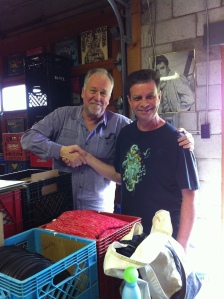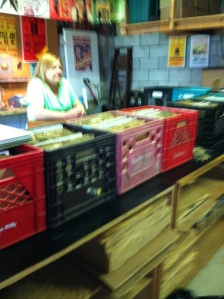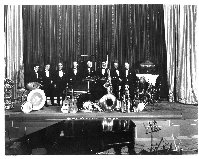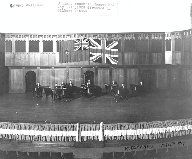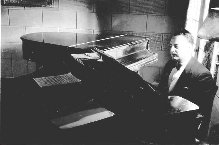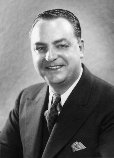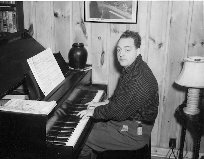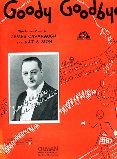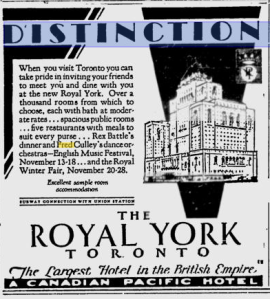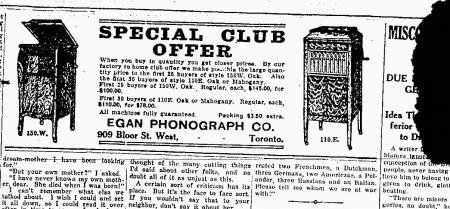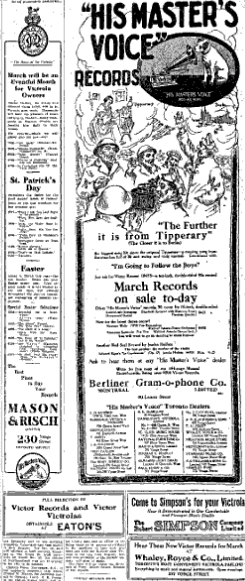he Starr Company of Canada, London, Ontario:
Their Head Office and Retail Store, 265 Dundas Street
by Betty Minaker Pratt
 |
The Starr Company of Canada Phonograph store, Wholesale & Retail, 265 Dundas St., London, “Merry Christmas / Happy New Year”, late December-early January, 1919. The location is on the south side of Dundas close to the corner of Wellington.
[courtesy of Alan Noon and Weldon Library, University of Western Ontario] |
|
|
If we could walk into the Starr store in London between the years 1917 and 1923, we might meet a few young musicians such as the Lombardo brothers who frequented Dundas Street at the time. We might also say hello to Melville Standfield of Toronto, who started as a travelling salesman with Starr, and whose life story led us to London [CAPS News, July-Oct. 2006]. Mel’s family was related to Thomas Standfield, the Tolpuddle Martyr who left England in the 1840s and is commemorated today on an Ontario plaque at Fanshawe Park Road East Cemetery. The story of the Standfields in turn led us to Mel’s start in the phonograph business with John Croden and Wilfred Stevenson. By inquiring of Guy Lombardo Museum, London Central Public Library and Museum London, we were introduced to the striking photograph of the Starr London store, carefully restored by Alan Noon at the University of Western Ontario, which gives us the best insight into the beginning of Starr in Canada. The photo of the Starr store was taken by Henry (Harry) G. Hines, a commercial photographer whose studio was at 666 Dundas Street during most of his career, between 1906-1933.
John Alexander Croden (Nov. 17, 1866 – Jan. 20, 1950), born in London, Ontario, and Wilfred D. Stevenson (1882 – July 9, 1960) from Ailsa Craig, north of London, had both previously been in the piano business. Croden had managed the London branch of Heintzman Pianos for twenty years, then moved to the Toronto area in 1912. On December 1, 1916, he left his position as vice-president and general manager of the R. S. Williams Piano Company in Oshawa to start in the phonograph business.
Stevenson started with Doherty Piano and Organ in Clinton, Ontario in 1900 and moved to London around 1902-03 to join the Sherlock-Manning Piano Company. There he worked his way up to office manager in charge of advertising and accounting. He then joined the Mendelssohn Piano firm in 1915 as a London agent [CMTJ, April 1917, p. 59]. Although this was a Toronto piano company, Mendelssohn had a strong connection to London. The head of the company, Henry Durke, married Gertrude Wilson, a sister of Stevenson’s wife Ethel Wilson [CMTJ, Jan. 1917, p. 65]. On April 1st 1917, Stevenson left Mendelssohn to enter business with John Croden [CMTJ, April, 1917, p. 59].
Croden and Stevenson, both keen on opening their own business, formed a partnership as the Canadian Phonograph Supply Company in March, 1917. They toured the extensive Starr Piano Company facilities in Richmond, Indiana, where they were impressed by the modern equipment, product quality, service and value of that operation. They chose to deal with Starr over all offers from other phonograph factories nearby [CMTJ, April, 1917, p. 59] and arranged, at first, to import Starr machines and records into Canada. They were also the local representatives of Gourlay Pianos and their line of player-pianos. They had a store by May 1917 when they took over the lease of the former Gourlay piano agency in London at 261 Dundas. Here, they proudly displayed ribbons won at the Panama Fair in San Diego by the Starr Indiana firm [CMTJ, July 1917, p. 51].
 |
John Alexander Croden (1866-1950) / Wilfred D. Stevenson (1882-1960)
London Advertiser, Thurs., Dec. 13, 1917
[courtesy of Douglas Flood] |
|
|
Gourlay, Winter & Leeming Pianos, based in Toronto, flourished between 1890 and 1923. The Gourlay Piano factory started operations in 1904 and by 1922 they were also making phonographs. They were also dealers in cabinet organs, made by Mason & Hamlin (Boston), Karn (Woodstock), Berlin (Kitchener), Thomas (Woodstock) and Bilhorn (Chicago). By 1922 they were carrying only Estey organs (Brattleboro, Vermont), which may be the one displayed in the London store window. In 1924 Gourlay was taken over by Sherlock-Manning Piano Company.
As new Starr Phonograph dealers, Croden and Stevenson would have received extensive help from Starr in Indiana in developing their business. Below is text from a Starr Piano Co., Richmond, ad encouraging new dealers for Starr phonographs:
Starr Phonographs and Starr Records are the heritage of long, successful manufacturing experience – So is the selling experience which assists the Starr dealer in developing his business. Everything possible is done to aid him. National advertising – in many of the leading publications, such as Cosmopolitan, Literary Digest, World’s Work, Scribner’s, Harper’s, National Geographic….Regular weekly schedule of large advertisements in over a score of the metropolitan newspapers….The new dealer receives a series of most attractive announcement ads…folders, picture slides, window cards, etc., without cost…he is monthly supplied with ten or a dozen illustrated timely ad-suggestions with copy, which he can easily adapt. Cuts are free. New picture slides, cards, booklets, etc., are frequently offered….[CMTJ, Sept. 1917, p. 56].
 |
Gourlay, Winter & Leeming Ltd letterhead, Toronto, Jan. 21, 1922. This company flourished between 1890-1923.
[author’s collection] |
|
|
There were several ads in the London Free Press of 1917 showing the Starr Richmond operation, including their claims of being only one of a few factories manufacturing phonographs in their entirety on site. They also insisted that any disc records, including Starr, Victor, Columbia, Edison and Pathé, could be played on their universal machines.
The Canadian Phonograph Supply Company was renamed The Starr Company of Canada on March 1, 1918, and by September moved their premises from 261 to 265 Dundas Street. Much of London’s architecture still retains a Victorian Italianate Renaissance Revival style from the late 19th century. In London, they are able to date many of these buildings to the 1874-1883 period when an architectural firm, Robinson and Tracy, created similar facades along commercial streets [Michael Baker, ed., Downtown London, p. 9]. The downtown area has a charming and unifying use of “white” brick, fashionable in the Victorian era of contrasting colours.
 |
London Advertiser, Thurs. Dec. 13, 1917
[courtesy of Douglas Flood] |
|
|
In 1918, the Starr Co. of Canada exhibited at the Western Fair, London:
Musical Instrument Display at London Exhibition, 1918
Gourlay Pianos and Starr Phonographs
The first exhibit to the left of the entrance is that of the Starr Company of Canada, who have the local representation of Gourlay and Gourlay-Angelus lines of pianos and players. A representative and attractive range of these were shown. Mr. D.R. Gourlay, vice-president of Gourlay, Winter & Leeming, Ltd., spent a couple of days assisting their London agents, who are doing an extensive and increasing trade with Gourlay lines.
The Starr lines of phonographs, which have been so energetically exploited in Canada since Messrs. John A. Croden and W.D. Stevenson secured the distributing rights for Canada, a little more than a year ago, appeared in full force at the fair, and the Starr company of Canada’s success at the Toronto Exhibition was duplicated [CMTJ, Sept. 1918, p. 74].
It was now a year and a half since they had begun setting up their new business as Starr representatives in Canada. Croden and Stevenson were now very busy dispatching travelling salesmen such as Melville Standfield, D. S. Cluff and J. W. Caswell (formerly of White Sewing Machine Co.) to all corners of the country. They unloaded boxcars of Starr equipment shipped from Indiana, and developed the Starr record pressing business with Herbert Berliner in Montreal.This company has recently moved their retail store and offices a few doors east of their old stand, giving them a larger, brighter and more attractive store. When a Journal representative called, Messrs. Croden and Stevenson were making necessary alterations for the stocking of a shipment of “His Master’s Voice” records. Their record department is on the ground floor, adjoining a series of demonstration booths, with the front or main portion of the floor set apart for general display purposes. A specially constructed front with deep entrance gives roomy show windows on either side of the main entrance. Their new location brings the music houses of London still closer together, they being all within a radius of a few minutes’ walk [CMTJ, Sept. 1918, p. 74].According to the CMTJ, the new store had sound-proof demonstration rooms, essential to attracting more business and often shown in photographs in the CMTJ. A few companies specialized in supplying equipment for such rooms, such as the Walker Bin and Store Fixture Company of Kitchener. Walker advertised modular compartments with double mahogany walls and inside panels of fibre board, easily dismantled by a carpenter to transfer to any new location [CMTJ, Nov. 1918, p. 60]. Although Stevenson may not have used Walker units, that company did understand its business, as an upright phonograph called the “Walker Talker” was another of their exclusive inventions.
 |
Starr Table Top, Style 1/2
[courtesy of Al Gentry] |
|
|
HMV advertising dominated the store window in the photograph, as Croden and Stevenson always sold extensive product from the Berliner factories in Montreal. They continued to promote Victor records, as they were more expensive and more prestigious than the Starr-Gennetts. There are three of the popular Nipper dogs in the window, all about 18 inches tall. Hanging records are obscured by the Christmas decorations, but perhaps show a glint of gold on the labels. On the floor are flat printed record display stands similar to those shown inThe Collector’s Guide to HMV Nipper Souvenirs ( p. 503). The plaster bust in the right window looks like Mozart which was probably a nod to their Mozart line of pianos [ad, City of London Directory, 1921]. It’s an eclectic variety of display items provided by Victor, Starr, Gourlay, and Mozart [fl. Toronto, ca. 1912-1920, EMC].
Two table-top machines are on the floor, but the grille of the one in the back, left window, is not clear enough to recognize the Starr Style 1/2 machine. These phonographs have the tone arm at centre rear, and a metal knob in the centre of the grille like the Starr, but the plain flat lids with square corners are different. Croden and Stevenson were selling many other makes of table-tops as well. In April 1917, they arranged for three other table-top styles of phonographs to retail at $20, $32.50, and $45 in order to give their dealers a line selling from $20 to $400.
 |
Theatrical window card, The Wanderer, in the store on the left at 267 Dundas, Woolnough’s Corsetiers.
LFP, Dec. 28, 1918, p. 9 |
|
|
The hanging store sign in the photograph shows a Starr upright machine that may be the Style 3/4 or a Style I, with straight bars on the grille, as shown in a rare comprehensive advertisement of all Starr phonographs available in Canada [Montreal Daily Star, June 26, 1920, p. 14]. Uprights like this appeared in a Starr catalogue of ca.1917-1919, from the Richmond parent company. This catalogue showed about eleven styles of uprights, numbers I – IX, and two larger models, the William & Mary and the Jacobean [Al Gentry]. In April 1917, the CMTJ described eleven styles of Starr machines from $65 to $400. In 1920, a London Free Press ad for Starr’s “Big Alteration Sale” mentions other uprights such as Columbia (Toronto), Sonora Baby Grand (Michigan/N.Y./I. Montagnes, Toronto), Mason & Risch (Toronto), Pathé (Montreal/Toronto) and Aeolian Vocalion (Nordheimer’s, Toronto / Scythes Vocalion) [LFP, Feb. 20, 1920, p. 14]. The sign also highlights their much applauded Silver Grain Spruce Singing Throat, which was supposed to amplify and improve the tone of the wood horn to resonate like a fine violin.
For the most part, uprights were available in Canada but long console cabinets, such as the Style XVIII, were made by Starr Richmond [Fabrizio & Paul, A World of Antique Phonographs, p. 202].
We can actually date the photograph of the Starr store from a theatrical poster in the window of Woolnough’s Corsetiers, next door at 267 Dundas Street [Vernon’s City of London Directory, 1917]. The poster announces the play The Wanderer, the Biblical story of the Prodigal Son, which was staged at the Grand Theatre between Dec. 28, 1918 and Jan. 8, 1919 [LFP, Dec. 28, 1918, p. 9; ibid. Jan. 8, 1919, p. 10]. This would be a memorable production, as it was billed as “the biggest spectacle ever brought to London with a flock of real sheep, dogs and goats, and a large ballet of dancing girls” [LFP, Wed. Jan. 8, 1919, p. 10]. Staged by David Belasco, Written by Maurice Samuels, Music by Anslem Goetzl, Presented by William Elliot, Ray Comstock, and Morris Gest…the Magnificence of the Orient in the time of King Solomon…. [LFP, Fri., Jan. 3, 1919, p. 12] David Belasco was the same impresario who gave Toronto’s Gladys Smith her stage name of Mary Pickford.
The business on the right was the Dominion Café, at 263 Dundas, listed in the London City Directories between 1917 and 1923.
Starr Company of Canada Chronology
| March 1, 1917 |
The Canadian Phonograph Supply Company founded in London, Ont., by John A. Croden and Wilfred D. Stevenson, importing goods from the Starr Piano Co., Richmond, Indiana. Stevenson mentioned their Starr warerooms at 261 Dundas, April 1917 |
| Fall 1917 |
Starr dealerships secured in western Ontario, Montreal, Quebec City, and the Maritimes; exclusive wholesale and retail rights to Starr products in Canada |
| August 1, 1917 |
Wilder’s Ltd in Montreal stocked Starr phonographs with manager George S. Pequegnant |
| December 6, 1917 |
Purchased the Gourlay Piano Store and agency at 261 Dundas Street |
| March 1, 1918 |
Company name changed to The Starr Company of Canada |
| May 1918 |
Dominion government imposed tax on imports of player pianos, player organs, records and talking machines, leading Croden and Stevenson to negotiate with Fred and Harry Gennett to plan Starr phonograph manufacturing in Canada |
| September 1918 |
The Starr store moved from 261 to 265 Dundas Street |
| November 1918 |
Melville Standfield developed Starr agencies in Western Canada |
| Late 1918 to early 1919 |
Starr-Gennett records pressed by Herbert Berliner’s new Compo Company in Lachine; labels marked, “Made by Starr Co. of Canada, London, Ont.” Romeo Beaudry distributed Francophone records on Starr and Compo labels in Quebec province (from 1919-1920 until 1959) |
| May 1919 |
Lateral Cut Gennett Records pressed in Lachine, bringing increased sales by August |
| February 1920 |
Fred Gennett and production manager A.F. Mayer spent several days in London, visiting three factories that were now producing Starr phonographs in Canada. Mr. Gennett was highly pleased with the organization in Canada and with the facilities for taking care of Starr and Gennett interests [CMTJ, Feb. 1920, p. 57] |
| March 1920 |
Stevenson arranged for a dealer in Winnipeg, a warehouse in Regina, and a distributor in Vancouver |
| September 6, 1920 |
Charter for The Starr Company of Canada Limited, granted, Toronto |
| March 1922 |
Advertisement showed 101 music dealers for Starr-Gennett records in Toronto alone, at the height of the company’s record distribution |
| April 28, 1922 |
Disastrous fire at Starr warerooms, 197-199 Dundas Street, resulting in a massive sell-off of damaged London stock at Quality Music Store in Toronto [Toronto Daily Star, May 19, 1922, p. 10], and at 195 Dundas Street London [LFP, May 13, 1922, p. 4] |
| 1923 |
The Starr Company of Canada, Limited, changed from a private to a public company [IHS, John H. MacKenzie Collection / Richard Green] |
| 1923 |
Croden began a real estate company in London, J. A. Croden and Sons [LFP, Jan. 20, 1950, p. 21 / LCPL] |
| 1924 |
The Starr Company of Canada, Limited, started liquidation of stock and assets [letter from George Welsh, Starr Richmond, Jan. 26, 1926 / Companies Branch] |
| February 1924 |
Stevenson briefly became Vice-President of Starr Piano Co. in Richmond [CMTJ, Feb. 1924, p. 78 / Richard Green] |
| 1925 |
Starr in Richmond, Indiana, discontinued the Starr label. |
| 1926-1929 |
John E. Roberts moved Starr of Canada from 265 Dundas to a smaller office at 410 Rectory Street and was in charge while stock was sold off |
| January 1926 |
Stevenson took over from R. H. Murray as manager of Sun Records, Toronto [CMTJ, Jan. 1926, p. 24 / Richard Green]. Later he was founder and president of Stevenson & Hunt General Insurance Ltd, London [LFP, Sat. July 9, 1960, p. 4 / LCPL] |
|

